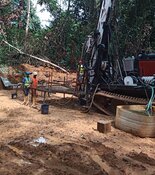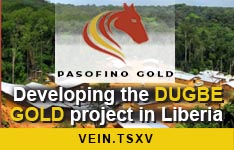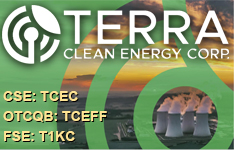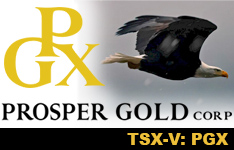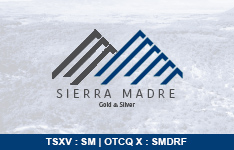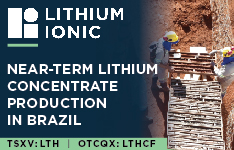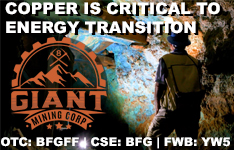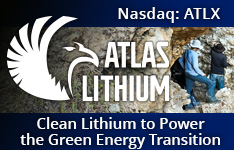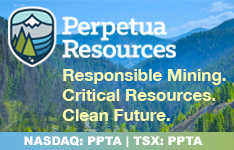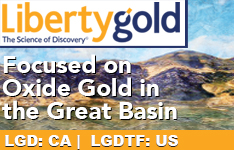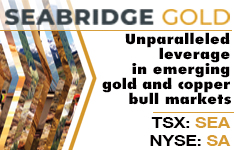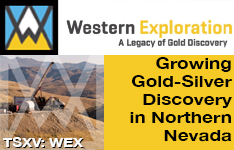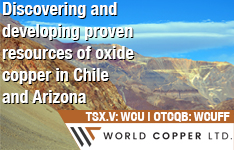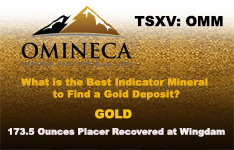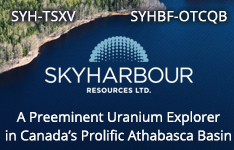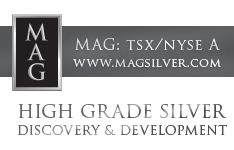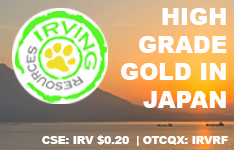Arizona Gold & Silver Inc. (AZS:TSX; AZASF:OTC) announced on April 7 the results from drill hole PC25-136 at its Philadelphia Project in northwestern Arizona, revealing a high-grade intercept of 4.91 meters averaging 9.20 grams per tonne (g/t) gold and 9.2 g/t silver. This interval lies within a broader zone of 25.9 meters grading 2.6 g/t gold and 4.2 g/t silver, which is itself part of a 41.9-meter interval averaging 1.6 g/t gold and 3.3 g/t silver. All grades have been confirmed using fire assay and ICP-MS methods, and true widths are estimated to be approximately 50% of the reported drilling thickness.
The Philadelphia Project, located in the historic Oatman Gold Mining District, has been the focus of renewed exploration since Arizona Gold & Silver acquired key claims beginning in 2019. The district is known for its epithermal gold systems, and the Rising Fawn area of the property, where PC25-136 was drilled, is one of the more recent additions to the company’s exploration campaign. Greg Hahn, VP Exploration, stated in the news release, “Drill hole PC25-136 is exciting in that it demonstrates the continuity of high-grade veining and an attendant stockwork system to the east of previously drilled mineralization.”
The company noted that textures observed in the core, including colloform, ginguro banding, and cockscomb quartz, are indicative of high-temperature epithermal processes, which can be associated with significant gold mineralization. These features are similar to those found in the nearby Oatman mines, which produced over 1.5 million ounces of gold historically.
Assays are pending for additional holes (PC25-137 through 139 and PC25-148), with drilling currently ongoing at hole PC25-149. Arizona Gold & Silver is permitted by the Bureau of Land Management (BLM) to drill up to 12,000 meters at the site between 2024 and 2025, testing both high-grade vein and bulk tonnage targets.
Gold and Silver Markets React to Global Tariffs and Rising Industrial Demand
Gold and silver markets experienced heightened volatility in early April following the announcement of sweeping global tariffs by former U.S. President Donald Trump. According to Kitco News on April 2, gold surged to a high of US$3,145 per ounce before stabilizing near US$3,130. Silver followed suit, reaching a session high of US$34.15 before settling near US$33.89 per ounce. Chris Zaccarelli of Northlight Asset Management noted that markets had initially anticipated more moderate tariffs, but “the details were released and they were far worse than expected,” fueling the rally in precious metals.
In a Silver Market Update published April 4, Peter Krauth explained that the tariffs initially sparked concern that precious metals might be included, contributing to recent gains. However, gold and silver were ultimately exempted. He wrote that silver’s recent 6% pullback may reflect “some of that built-in premium” being removed. Despite the decline, silver remained up roughly 10% year-to-date, with junior silver miners showing even greater gains. Krauth emphasized that silver’s industrial role, particularly in solar and electronics, could temper further downside.
On April 4, Stockhead highlighted continued strength in gold equities, especially on the ASX. Analysts at Goldman Sachs reported that gold miners’ margins expanded as prices outpaced costs. “We expect this gold equities cycle to continue,” they stated, citing moderating cost inflation and improved cash flow. The analysts also observed a shift in investor focus from production growth to profitability and free cash flow, noting that average all-in sustaining costs had fallen 4.6% in the December quarter to US$2,051 per ounce.
According to a report by Ahead of the Herd on April 7, the gold-silver ratio had reached 102. This is well above the historical average of 60. The report stated that “silver is significantly undervalued relative to gold at current levels,” and predicted that investors would soon recognize the discrepancy. The analysis cited silver’s dual role as a precious and industrial metal, with 60% of annual demand coming from industries like solar, EVs, and electronics. A study by Oxford Economics, commissioned by the Silver Institute, forecast a 42% increase in industrial demand for silver between 2023 and 2033, while total supply was expected to decline by 1% in 2024. The resulting 215.3 million ounce deficit would mark the second-largest in over two decades.
Richard Mills, writing in that Ahead of the Herd report, added that the silver market appeared to be in its fourth consecutive year of structural deficit. He noted that “precious metals do particularly well when the dollar is weak, the global economy is on the verge of recession, and geopolitical tensions are high,” referencing ongoing conflicts and rising investor demand for safe-haven assets.
Drill Program Advances Along Proven Gold Trend at Philadelphia Project
According to the company’s March 2025 investor presentation, the Philadelphia Project spans a known strike length of at least three kilometers, of which approximately 1.5 kilometers have been drilled to date. The project lies along the Arabian Fault and features a prominent flow dome, favorable geological structures for gold mineralization in epithermal systems.
The company has identified multiple exploration targets, including a high-grade vein system, a broad stockwork zone, and undrilled southern extensions of the mineralized corridor. Historic drill results have included intervals such as 72.5 g/t gold over 1.5 meters and 115.85 meters of 1.34 g/t gold with 5.78 g/t silver. These results suggest the presence of both narrow, high-grade intercepts and wider, lower-grade mineralized envelopes that could be amenable to open-pit mining.
 Streetwise Ownership Overview*
Streetwise Ownership Overview*
Arizona Gold & Silver Inc. (AZS:TSX; AZASF:OTC)
Arizona Gold & Silver’s ongoing 2024–2025 drill program includes targeted core drilling at the Rising Fawn and Perry vein systems. The company plans to complete 4,000 meters of drilling at the Rising Fawn zone, with approximately 25% completed to date. An additional 3,000 meters are scheduled for the Perry Gap area. These efforts are designed to follow up on prior intercepts and extend known zones of mineralization along strike and down dip.
Infrastructure at the project is well established, with paved road access and year-round drilling conditions. The company holds 100% control of the project, which includes both patented and unpatented claims. Historically, the Philadelphia mine area produced approximately 40,000 ounces of gold before mining was halted in the 1930s due to infrastructure changes.
Together, the combination of high-grade intercepts, favorable geology, and active drilling positions Arizona Gold & Silver for continued advancement at the Philadelphia Project as additional results become available.
Ownership and Share Structure
Arizona Gold & Silver provided a breakdown of its ownership and share structure, where insiders and advisors own approximately 23% of the company, 9% is held by institutions, Sprott holds 8%, and 44% is with family and friend investors. The rest is retail.
According to Reuters, there are 93.86 million shares outstanding, while the company has a market cap of CA$30.03 million and trades in the 52-week period between CA$0.25 and CA$0.52.
| Want to be the first to know about interesting Silver and Gold investment ideas? Sign up to receive the FREE Streetwise Reports' newsletter. | Subscribe |
Important Disclosures:
- As of the date of this article, officers and/or employees of Streetwise Reports LLC (including members of their household) own securities of Arizona Gold & Silver and West Point Gold Corp.
- James Guttman wrote this article for Streetwise Reports LLC and provides services to Streetwise Reports as an employee.
- This article does not constitute investment advice and is not a solicitation for any investment. Streetwise Reports does not render general or specific investment advice and the information on Streetwise Reports should not be considered a recommendation to buy or sell any security. Each reader is encouraged to consult with his or her personal financial adviser and perform their own comprehensive investment research. By opening this page, each reader accepts and agrees to Streetwise Reports' terms of use and full legal disclaimer. Streetwise Reports does not endorse or recommend the business, products, services or securities of any company.
- For additional disclosures, please click here.





